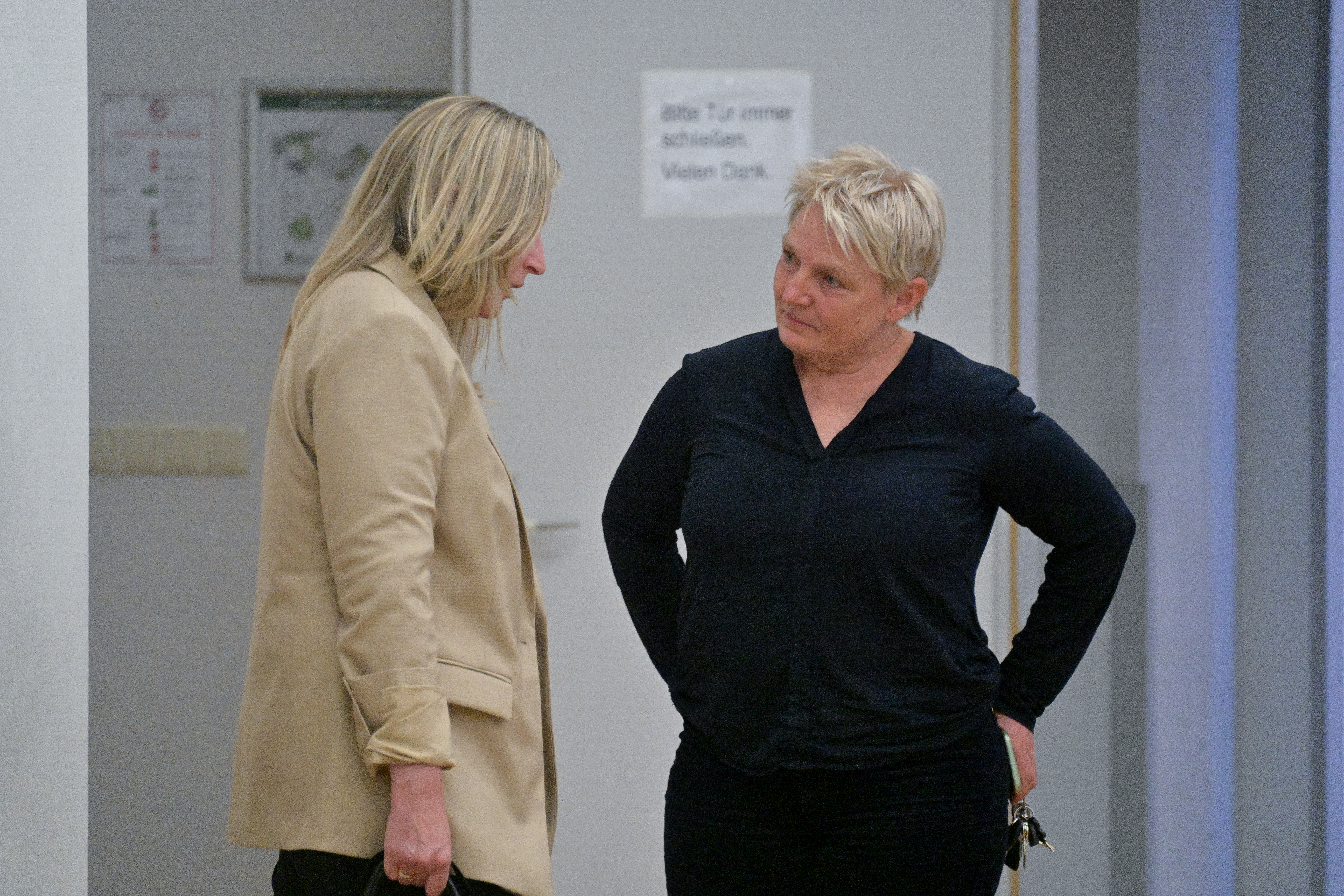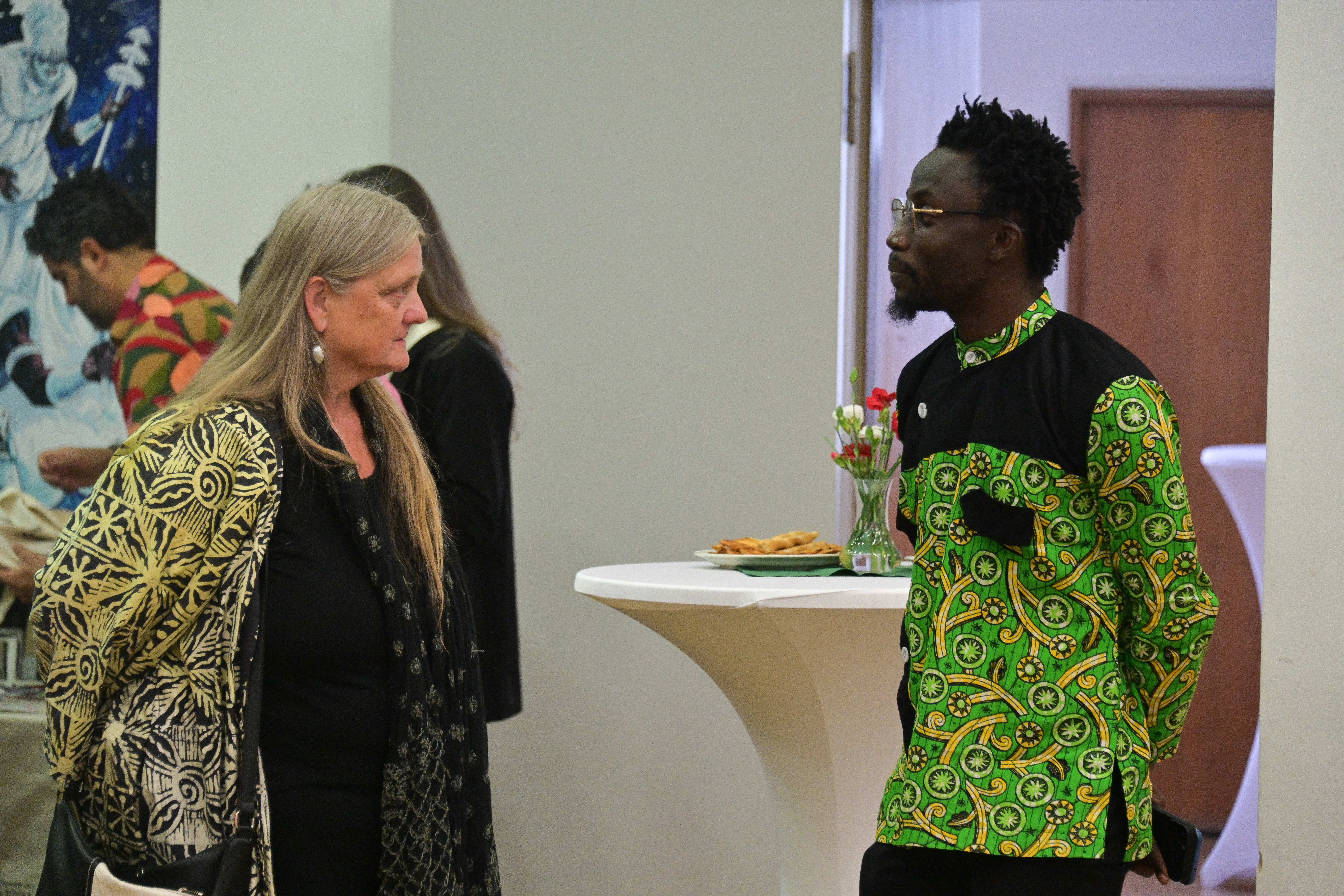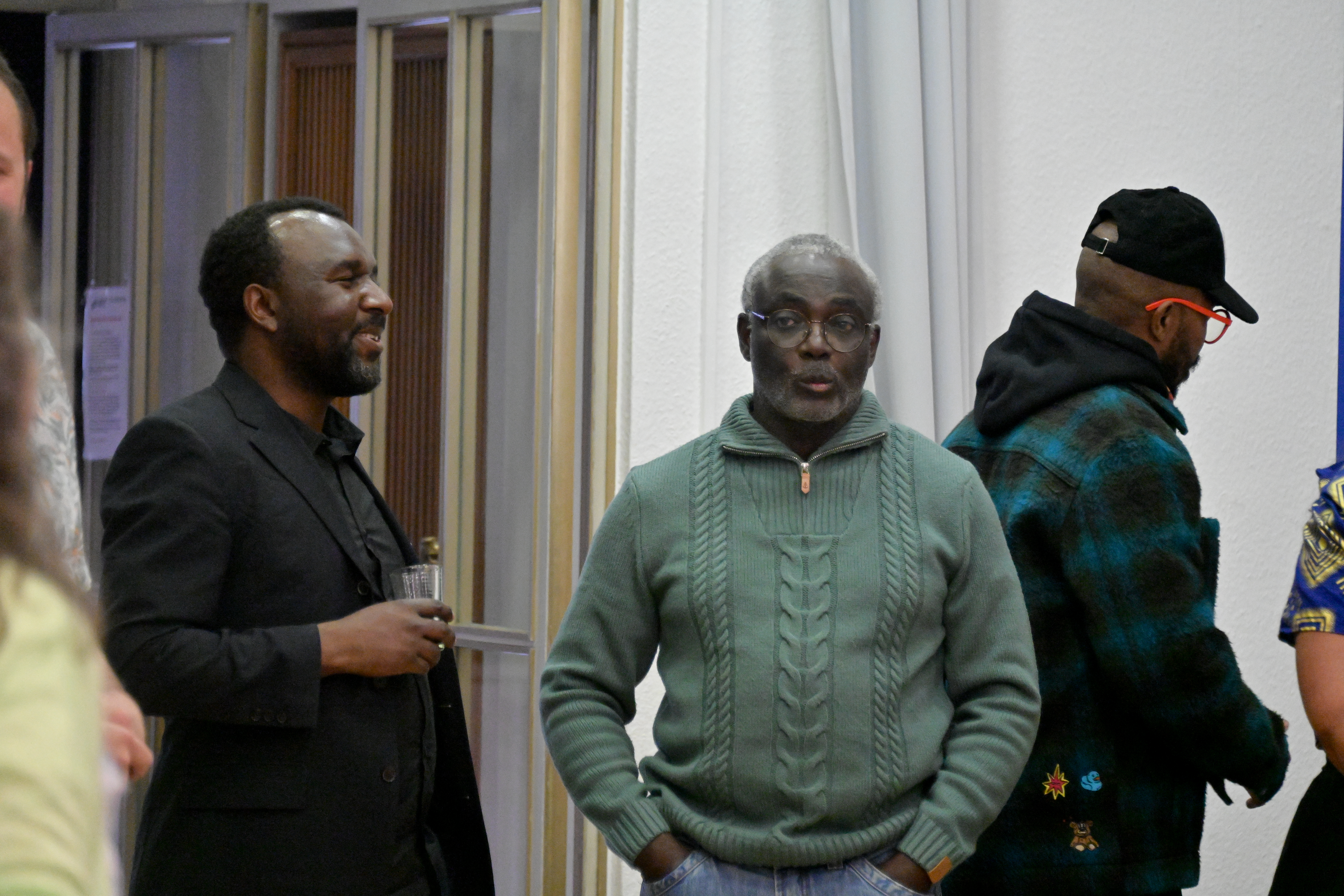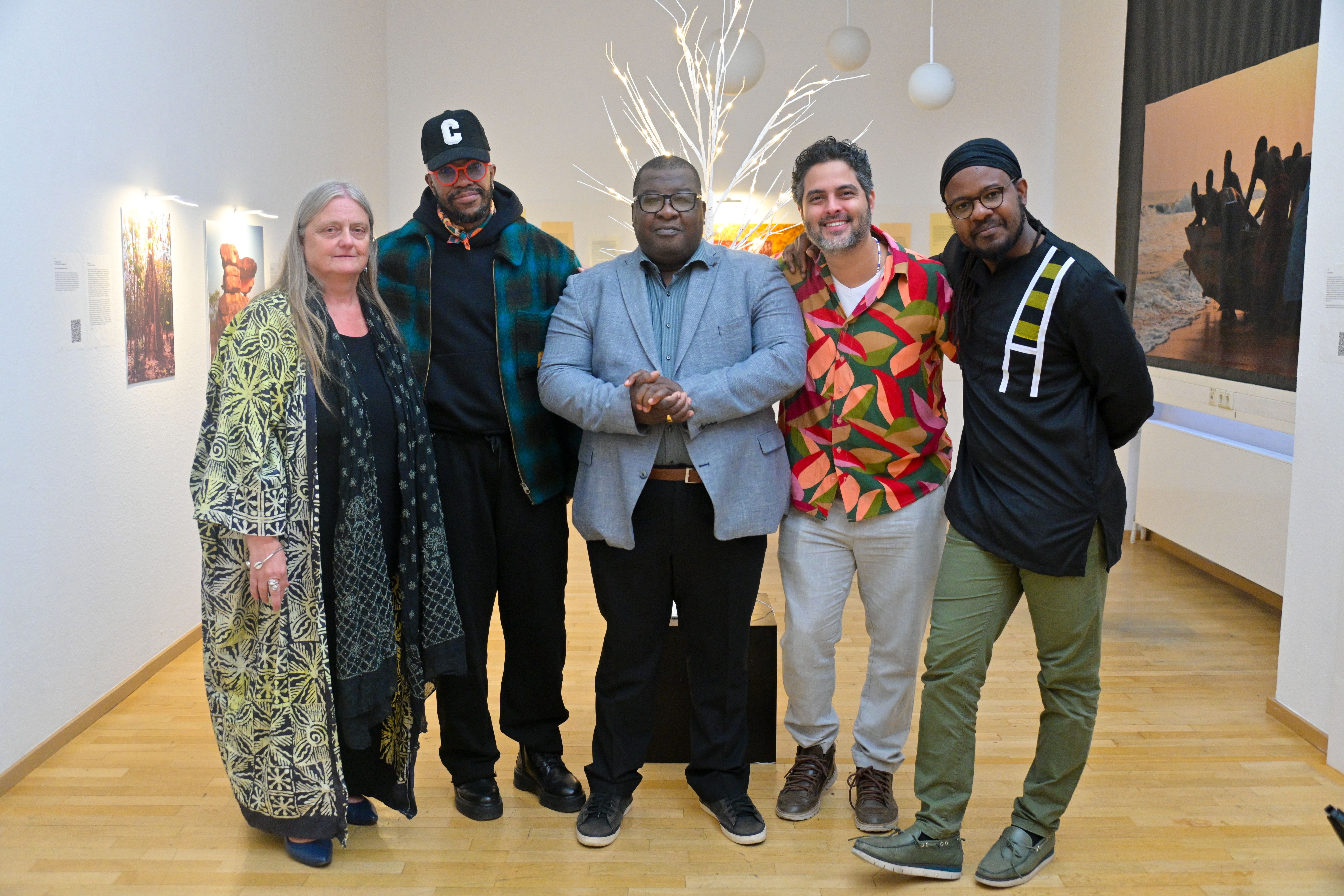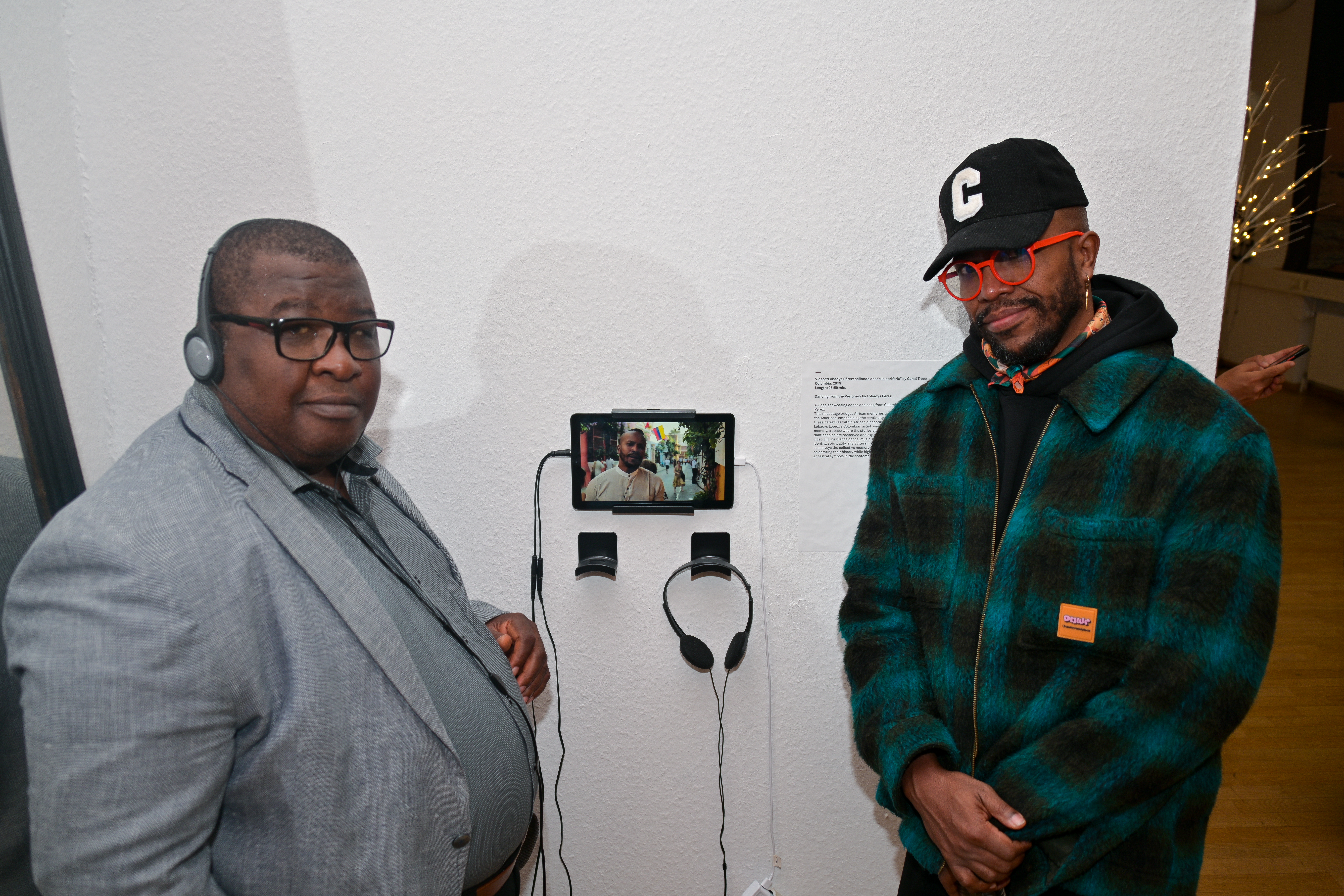News
Vernissage: From Oblivion to Memory – Transatlantic Memorial Echoes
11.06.2025
Within its annual conference, the Africa Multiple Cluster of Excellence featured the vernissage of the exhibition entitled From Oblivion to Memory – Transatlantic Memorial Echoes at Iwalewahaus, University of Bayreuth, on 15 May 2025. Curated by Thierry Boudjekeu and Ute Fendler and running until 31 July 2025, the exhibition serves as the final activity of the research project Black Atlantic Revisited – African and South American UNESCO World Heritage Sites and 'Shadowed Spaces' of Performative Memory.
The exhibition explores the legacy of the transatlantic slave trade through a wide range of media, including photography, painting, video, and text. The curatorial approach aims to highlight how memory persists despite historical efforts to erase it and demonstrates how artistic expression plays a key role in preserving and transforming this memory across the Atlantic world.
The event opened with a word of welcome and remarks on the exhibition's context and significance. Sigrid Horsch-Albert, director of IwalewaHaus, welcomed visitors and situated the exhibition within the institution's commitment to African contemporary art and cultural dialogue. Ute Fendler introduced the broader research context in which the exhibition falls, explaining its position as the culmination of the Black Atlantic Revisited project and its contribution to ongoing scholarship on transatlantic memorial practices.
Thierry Boudjekeu presented the exhibition itself, reflecting on the fragile but persistent nature of memory. Drawing on extensive fieldwork in Ouidah, Benin, he shared stories and oral histories that reveal how local communities continue to engage with the traumatic past of the slave trade. These accounts include symbolic rituals and spiritual transformations aimed at escape and survival, which form the conceptual foundation of the exhibition's narrative structure. Kangni Alem, who collaborated within the exhibition at the curatorial, conceptual, and aesthetic levels, addressed his multifaceted contribution to the project, discussing how literary perspectives informed the exhibition's approach to memorial representation and transatlantic dialogue.
The exhibition is an immersive, multi-stage audiovisual journey set in a dark, enclosed space. It weaves together sound and visual fragments from West Africa to evoke the memorial echoes of the transatlantic slave trade. At its centre stands the Tree of Oblivion (Arbre de l’oubli), a symbol of transatlantic fragments and echoes. Through images, artefacts, and oral testimonies, the exhibition traces the brutal mechanisms of capture and deportation of sub-Saharan Africans. Each stage contributes to a therapeutic expression of memory, illuminating silenced histories that remain vivid in West Africa’s collective consciousness.
The exhibition participants explored the capacity of contemporary artistic expression to bridge geographical and temporal distances through memorial practices. The experiences and fragments of memory that resurface in contemporary Africa find echoes in South America through the contributions of Colombian choreographer Lobadys Pérez and African spiritual narratives from Salvador de Bahia, reimagined in comic strips by Brazilian artist Hugo Canuto. These works dialogue with the exhibition’s memory fragments, linking West African Vodun deities to their Brazilian Orixá counterparts.
While Hugo Canuto presents illustrations that reinterpret these spiritual traditions across the Atlantic divide, Gaëtan Noussouglo's photography documents traces of history in Benin's contemporary landscape. Lobadys Pérez uses choreography to explore how the body can carry and transmit ancestral memory, demonstrating the persistence of embodied knowledge. Flavien Zountchémé contributed poetic texts that accompany the visual works, and Kangni Alem brings literary perspectives to the curatorial framework.
The opening event reflected the collaborative and interdisciplinary nature of the project, with special thanks extended to Sylvestre Edjekpoto, director of the NGO Afrique Décide, for his support during fieldwork in Benin and for contributing a documentary on the legacy of the slave trade in the region. Although not present at the vernissage, Katharina Greven was acknowledged for her design work and coordination, alongside Sefer Polat, who managed the technical aspects of the exhibition. An online version of the exhibition is made possible thanks to the digital support of Sabine Greiner and team.
The exhibition presents not only a historical narrative but also a living, evolving dialogue between memory, art, and resistance across the Atlantic world, contributing to ongoing debates about memorial practices and their role in contemporary cultural expression.
More information and a virtual exhibition is available at: https://www.africamultiple.uni-bayreuth.de/en/Important-Dates/2025-05-15_exhibition/index.html
Text:Thierry Boudjekeu and Laude Ngadi


